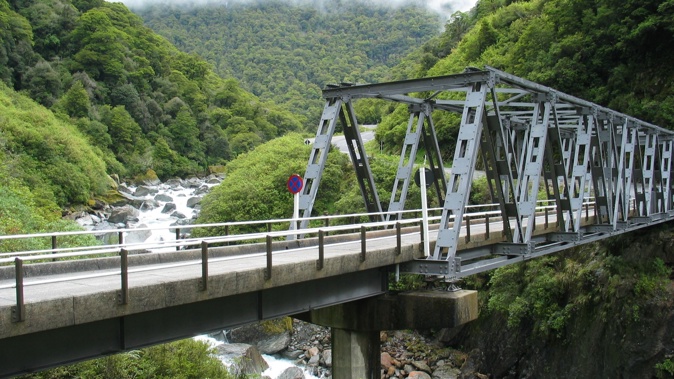
Stitching Central Otago to the wonders of South Westland, the Haast Pass Highway is what epic roadies are all about. The Haast region is the centrepiece of Te Wāhipounamu World Heritage area. As the last mountain pass to be constructed over the Southern Alps and only fully chip-sealed in 1995, this 140km-long panoramic alpine pass still exudes a “final frontier” sense of escapism as it threads its way through South Westland’s primeval forests. The route had long been used by Māori warriors and greenstone (pounamu) gatherers, as they traversed the Main Divide.
Julius von Haast, a rather ego-centric surveyor who crossed the pass in 1863, shamelessly named the route after himself, despite being beaten to the punch by a gold prospector, Charles Cameron, who achieved the feat a few weeks earlier. For the next century, narrow bush tracks were the only means of passage across Haast Pass, until the shingled highway officially opened in 1965. I’ve just romped through the region on an autumn roadie.
From the southern end, you enter the Heidi-country deliciousness of the Makarora Valley. Be sure to head to the Blue Pools, accessed via an effortless 30 minute return walk through silver beech forest, across boardwalks and a swing-bridge to the translucent pools in the Makarora River. The bridges and boardwalk are currently being reconstructed, with bridge access closed until the end of May. These serenely still azure pools are a feeding ground for large brown and rainbow trout, which you can spot with crystal-clear precision from the bridge. The glacier-fed water is so gin-clear, the resident fish seemingly appear to be suspended in air.
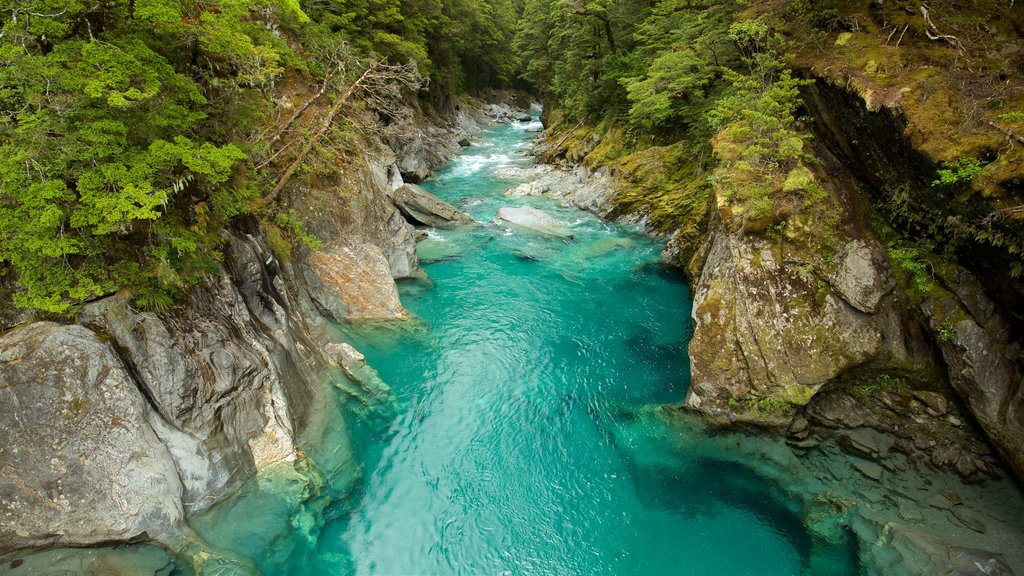 Blue pools on the Haast Highway. Photo / Tourism West Coast
Blue pools on the Haast Highway. Photo / Tourism West Coast
Thirty minutes north on the Haast Pass Highway, amid the vaulting landscape of towering peaks and dense rainforest, welcome to a wonderland of waterfalls. First up, Fantail Falls. Despite a plethora of native birds whooshing and trilling overhead, this waterfall doesn’t take its name from the birdlife, but because the base of the fall splays out in a triangular fantail-shape. This would be quite the water feature, to impress your guests in the garden. Apparently, these are the most photographed of the area’s smorgasbord of falls, but it’s Thunder Creek Falls, further up the road, that struck me as the biggest pixel-burner. Hurtling down into the Haast River from a 28 metre high drop, Thunder Creek is a boastful exhibitionist, powered with the riotous rush of a fire hydrant.
The waterfall height also serves as stark lesson on just how high the glacier field was during the last ice age, 12,000 years ago. Above the treeline at Thunder Creek, clinging implausibly to the vertiginous slopes, you’ll notice gardens of snow tussocks, dainty flowering herb fields and mountain buttercups sprouting, flourishing against the odds. For more vertical aqua magic, Roaring Billy is a 25 minute return walk, through a densely vegetated forest grove of emerald tree ferns - an absolutely enchanting walk that Weta Workshop could not improve on. But the highway’s most theatrical trump card is the ominously named Gates of Haast. This narrow highway crossing over the Haast River, hemmed in by canyon-like cliff walls and gigantic boulders of tumbling schist, is a striking sight as the surging waters thunder through the gorge like a freight train.
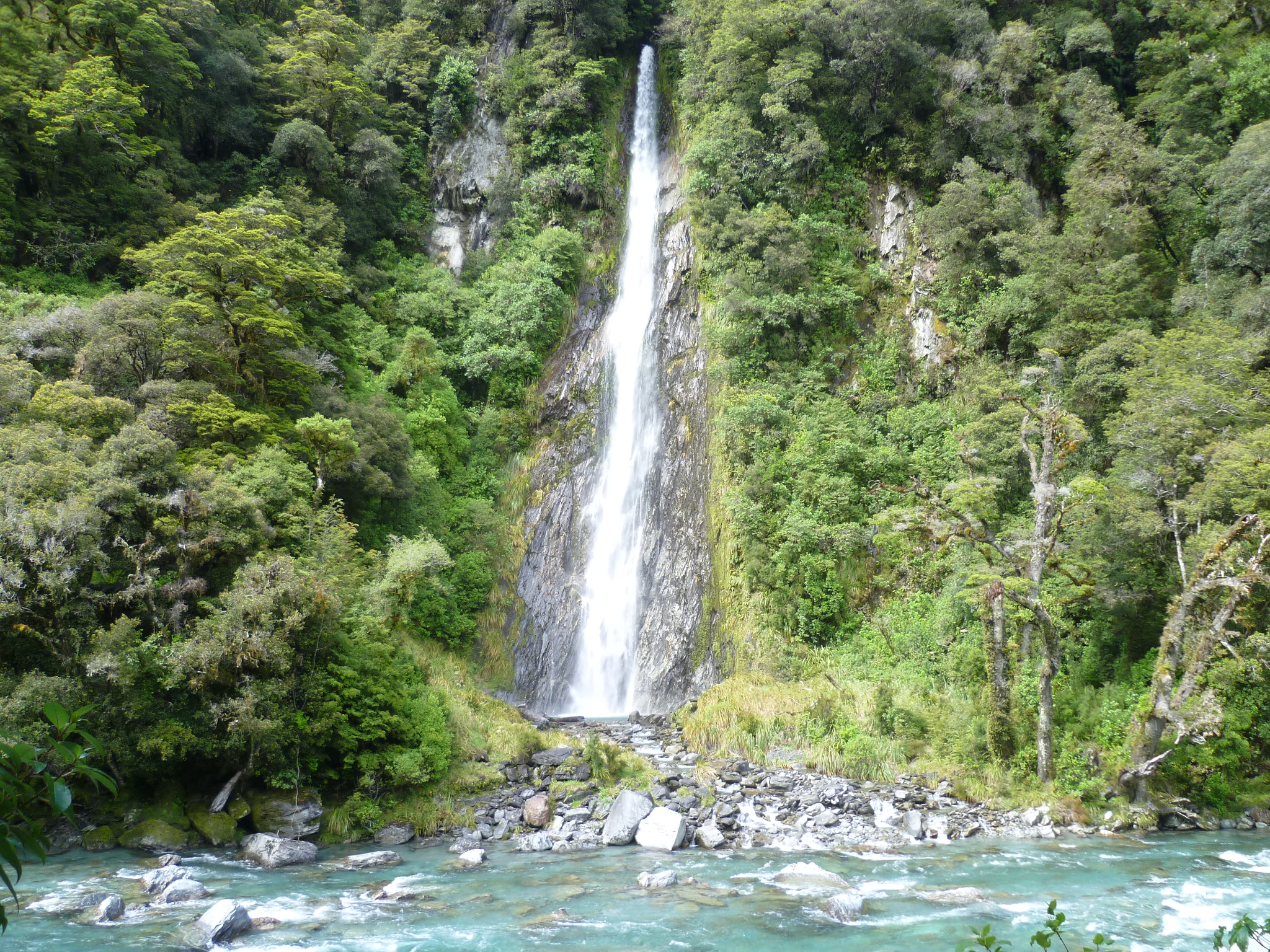 Thunder Creek Falls. Photo / Mike Yardley
Thunder Creek Falls. Photo / Mike Yardley
Adding to the scenic medley, the foaming surf of the Tasman coastline shuffles closer into view, as the highway skirts undulating forests that appear to float in the tea-stained waters of the lowland swamps, strung around Haast. I headed 30 minutes up the highway to one of the West Coast’s most dramatic lookouts, Knight’s Point. Along with swollen views of the rugged coastal splendour and the wave-lashed rock stacks, the obelisk memorial at the look-out commemorates the completion of the highway, connecting Westland with Otago. If you’re wondering about the name, the chief surveyor’s dog was called Knight.
I then turned around and sauntered back towards Haast township, to step out on the glorious Ship Creek walks. There are two short and sweet strolls here. The Kahikatea Swamp Forest Walk follows the slow-flowing creek, looping through dense swamp forest where you’ll see sublime specimens of our tallest tree, the kahikatea, seemingly interlocked with each other to provide extra stability in the dense swamp. The Dune Lake Walk is a 1km loop which leads you along the lake created by wind-blown sand and past wind-stunted forest before opening up on the sand dunes and the long sweep of the coastline all the way to Jackson Head.
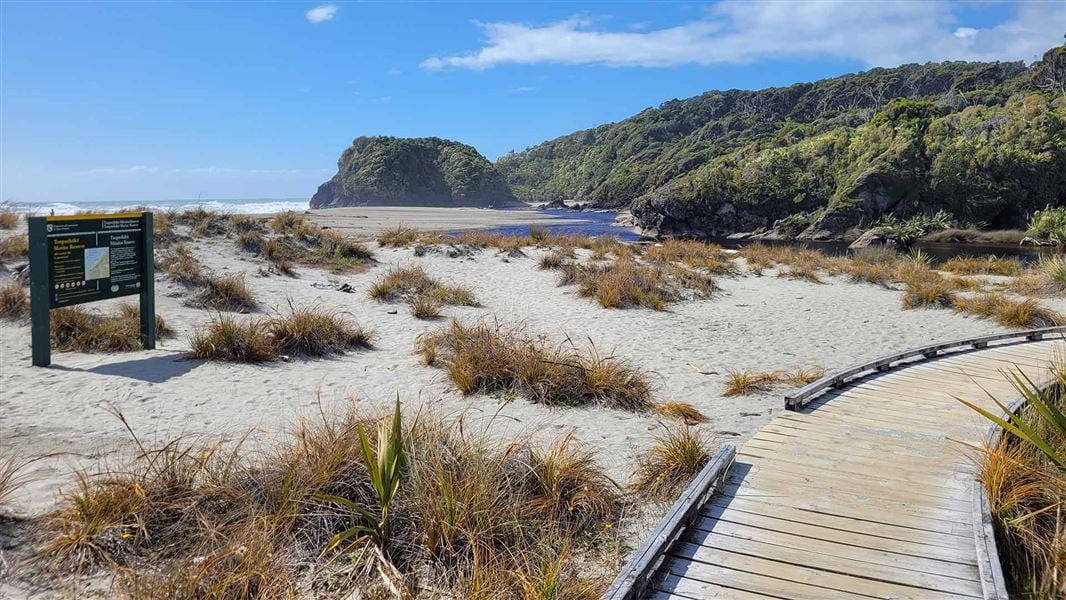 Dune Lake walk at Ship Creek. Photo / DOC
Dune Lake walk at Ship Creek. Photo / DOC
As the name suggests, Jackson Head guards storied Jackson Bay. Venturing to this far-flung ‘end of the road” is a signature experience in this wild and woolly pocket of New Zealand. Before reaching Jackson Bay, I first stopped at Hannahs Clearing where I joined an eager group of tourists on the Waiatoto River Safari. This family-run enterprise is passionately led by Wayne, Ruth and their delightful 9-year-old daughter Aru (she produces some beautiful handcrafted pounamu jewellery, for sale at the shop). Wayne and Ruth have a background in commercial aviation, piloting scenic flights in Wanaka and mountain flying training, including the Haast UNESCO World Heritage area. In 2007, a chance meeting led them into the world of backcountry jet boating, which is what you’ll experience with them.
The Waiatoto River Safari is backcountry jetboating at its very best, zipping you deep into the raw and remote wilderness of the Haast area. Accessing these parts would take several days on foot. The jet boat ride up the Waiatoto River is not a thrills and spills ride - the primal pull of the alpine wilderness is the starring attraction. Wayne’s stirring storytelling unpacks a myriad of riches about the natural environment. We stopped by a thriving kiwi sanctuary on the water’s edge, now home to 400 brown kiwi.
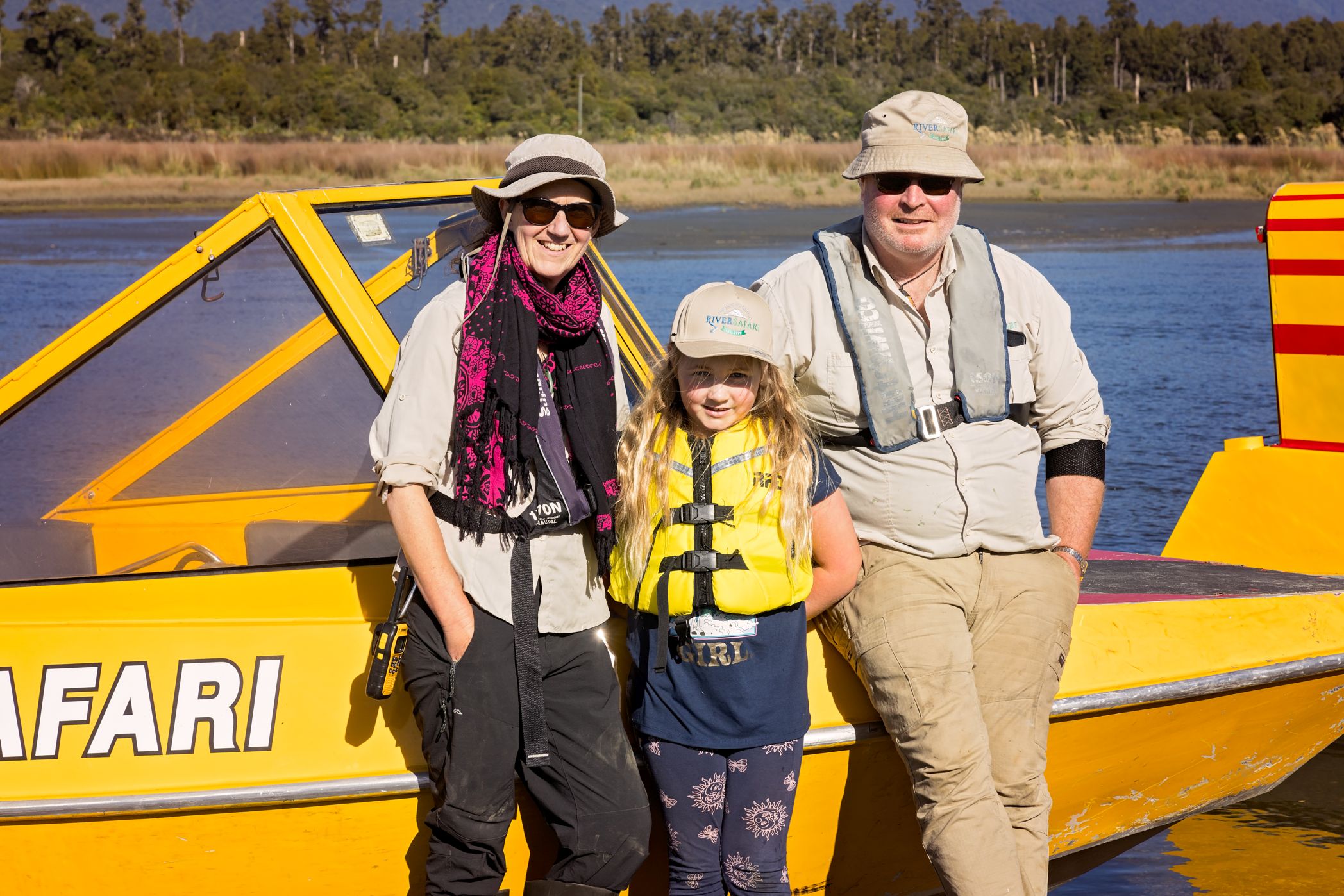 Wayne, Ruth, and Aru at Waiatoto River Safari. Photo / Supplied
Wayne, Ruth, and Aru at Waiatoto River Safari. Photo / Supplied
When it rains it pours in these parts and Wayne pointed out how the river can dramatically rise by over two metres an hour. The calling card of recent flood events is vividly illustrated along the riverbanks by uprooted trees. In the sunshine, the glacial water glistened with that trademark milky blue hue, fed by the Volta Glacier. Wayne pointed out how truck-sized boulders had been washed down by the glacier retreating at the end of the last ice age. We also noted the Alpine Fault, carving its mighty path through the landscape.
Our safari headed as far upstream as possible, laying over at the vividly-named Shark’s Tooth rapids. Fresh scones and a cup of tea are served and we enjoyed a walk along the sandy beach, marvelling over the giant boulders and layered strata, edging the river. On a brief stroll into the riverside forest, towering rimu and matai rose up to greet us, festooned in lush ferns, orchids and moss. Heading downstream, Wayne zipped us to the coast, where the glacial hues yield to brackish-brown water, closer to the sea.
Whitebaiting is an abiding passion in these parts and the water’s edge is studded with numerous whitebait stands. A gorgeous little spot is the tannin-stained Hindley Stream, trailing off from the Waiatoto River, edged by vast stands of kahikatea, as the booming surf of the ocean pierces the silence. This two-hour river safari is a remarkable and immersive encounter with the staggering diversity of the Haast region’s landscapes and precious ecosystems. It’s nature unplugged – and a must-do. riversafaris.co.nz
Feeling peckish, I drove around to the back-of-beyond fishing village of Jackson Bay, where the wharf, which is nearly 90 years old, strikingly stretches deep into the sea. The bay is the only sheltered harbour between Greymouth and Milford Sound, although it is exposed to northerly storms. History runs deep here, headlined by the ill-conceived plan for a government-supported settlement in 1875, which lured hundreds of Poles, Irish, Italians, Scandinavians, Germans and English to the area. The lack of fertile flat land, the isolation, rainfall and the sandflies all took their toll, and most settlers had decamped within three years.
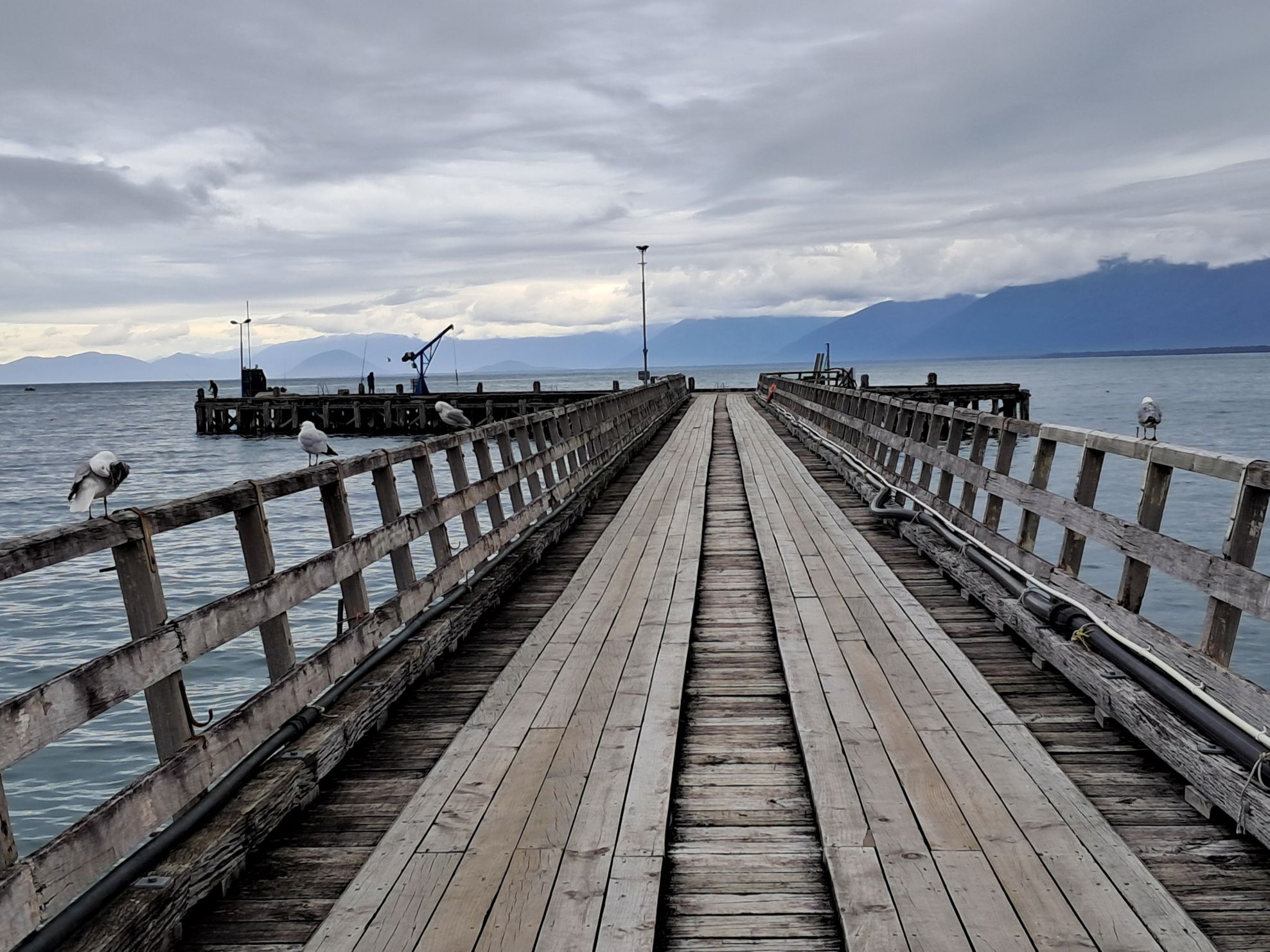 Jackson Bay Wharf. Photo / Mike Yardley
Jackson Bay Wharf. Photo / Mike Yardley
Today, fishing endures as Jackson Bay’s mainstay, with crayfish, blue cod and tuna being the prized catches. After enjoying some bush walks, I tucked into some delicious fare at The Craypot. This cute-as-a-button eatery began life as a pie cart in Timaru, before being moved to Cromwell in the 1980s. A Haast local purchased it in 2001, towed it over Haast Pass behind a tractor, and set up shop on the Jackson Bay esplanade. This quirky caravan style café cooks up a West Coast seafood storm, whether you’re up for a seafood chowder, seafood basket, whitebait, crayfish – or best of all, blue cod. It’s pricey, but destination dining in excelsis.
Where to stay? Nestled near Haast Visitor Centre, Haast River Motels & Holiday Park is a fabulous base to launch your day’s wild adventures from. This all-embracing complex with charmingly helpful staff caters to all travellers, from powered and unpowered sites for motorhomes, caravans and tents; to stylish motel accommodation, including studios and apartments that can sleep up to five people. There’s also a bunk room that can sleep seven. My deluxe family studio was a haven of comfort, with an ensuite, kitchenette, dining suite & sofa.
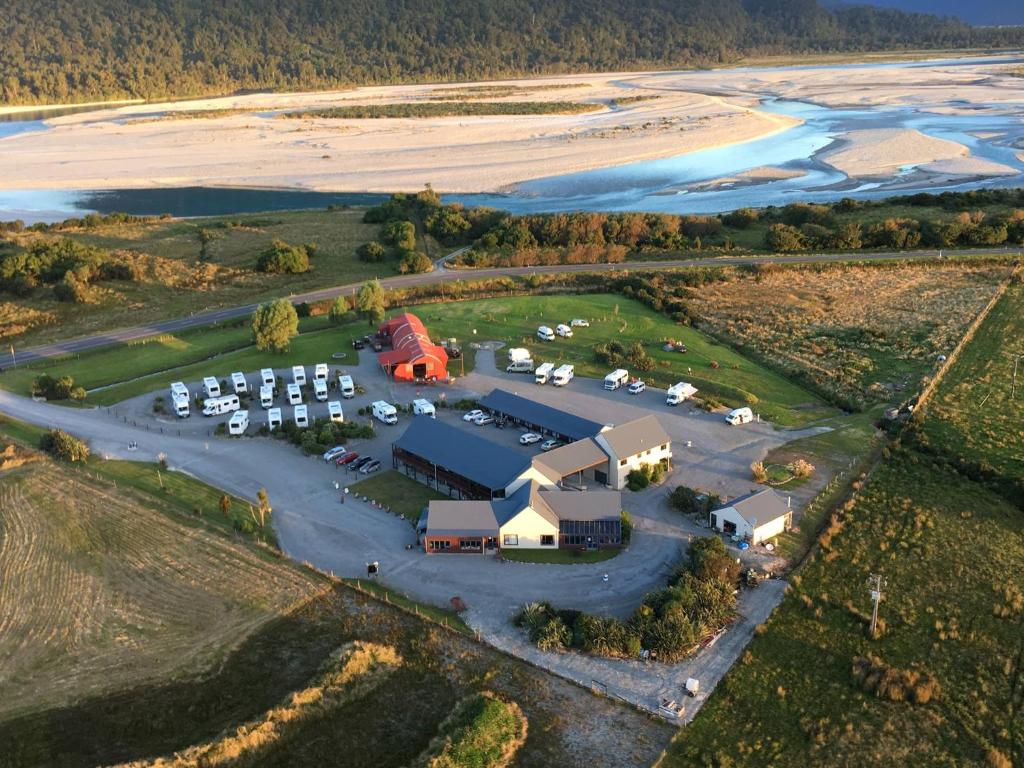 Haast River Motels & Holiday Park. Photo / Supplied
Haast River Motels & Holiday Park. Photo / Supplied
It was well equipped with complimentary coffee, tea, milk and sugar; cooking utensils; crockery; cutlery; hot plates; microwave; fridge; toaster & jug. The complex also includes free WiFi, TV lounge, games room, laundry and playground. There’s a shower block and kitchen for the campers, too. No matter your budget and choice of accommodation, Haast River Motels & Holiday Park is a trusty provider of hearty West Coast hospitality. haastrivermotels.co.nz
Mike Yardley is Newstalk ZB’s resident traveller and can be heard each week at 11.20am on Saturday Mornings with Jack Tame.
Take your Radio, Podcasts and Music with you









